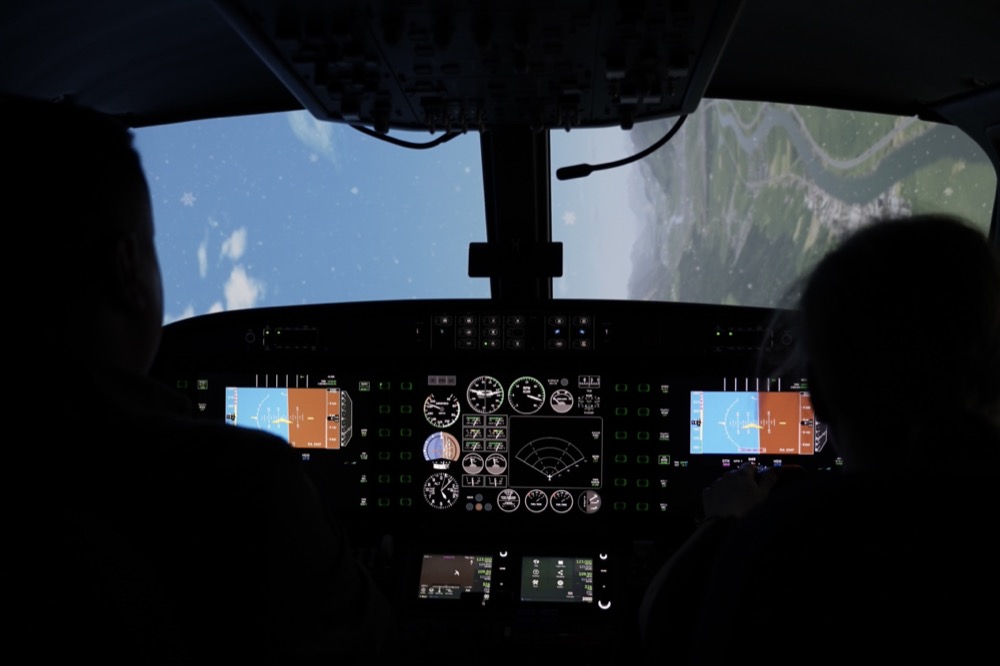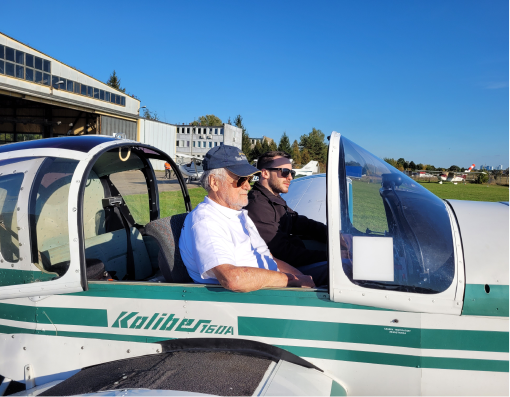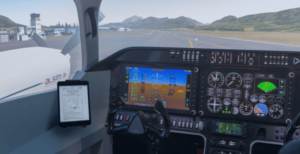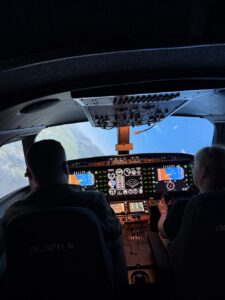Integrated training
AUPRT
About the training
The AUPRT (Advanced Upset Prevention and Recovery Training) is an advanced course designed to prevent dangerous in-flight situations, such as loss of control of the aircraft. It teaches both threat recognition and effective recovery techniques in cases of stalls or unusual attitudes.
The training consists of a theoretical and a practical part and is intended for holders of a PPL(A) license.
Requirements
- Valid private pilot license PPL(A)

UPRT Advanced - step by step
What does the training program look like?
Theoretical part
1 day of lectures
Practical part
3 hours of flight with an instructor

Benefits of completing the training
You will:
- Learn to regain control of the plane.
- Master the most important techniques to prevent loss of control of the plane.
- Understand what recovery from a diving spiral and recovery from a stall involve.
- Increase your ability to control stress and respond to unusual situations.
- Recognize, understand, and respond to dangerous situations in the cockpit.
- Be prepared for unusual situations and sudden events during the flight.
- Increase your piloting competencies, becoming more aware and responsible for aviation safety.
- Gain more self-confidence in emergency situations and learn to manage stress effectively.
How long does the UPRT Advanced training last?
EASA AUPRT training is a combination of theoretical knowledge, practical exercises and advanced piloting techniques. During the intensive theoretical part, you will learn the principles of aerodynamics, physics, conditions for losing control of the aircraft and techniques for regaining it. Then you will have a 3-hour flight and put the acquired knowledge into action. You will practice techniques for regaining control of the aircraft and gain practical experience in managing emergency situations. You will learn to deal with unexpected events precisely and calmly.
1
day of theoretical training
3
hours of flight with an instructor
How much does UPRT Advanced training cost?
Contact us to get the detailed training offer.
Upcoming UPRT Advanced training
Ask about our upcoming training sessions and join the group of their participants!
Dlaczego warto szkolić się z UnitedSky?
Doświadczona kadra
Nasi instruktorzy to eksperci i piloci liniowi, którzy nie tylko dzielą się swoim bogatym doświadczeniem, ale także pasją do latania.
Realistyczne szkolenia
Dbamy o to, aby nasze kursy były w pełni dopasowane do Twoich potrzeb. Przekazujemy wiedzę oraz praktyczne umiejętności, które przygotują Cię do rzeczywistych warunków lotu.
Bezpieczeństwo i skuteczność
Dbamy o bezpieczeństwo i profesjonalizm pilotów, pomagamy spełniać marzenia o lataniu i rozwijaniu kariery w lotnictwie.
Różnorodne doświadczenia
Umożliwiamy naukę na różnorodnym sprzęcie w atrakcyjnych lokalizacjach: w Warsaw Towers i centrum szkoleniowym w Ogonkach, na lotniskach w Babicach i Modlinie.
FAQ
Najczęściej zadawane pytania
Training
The EASA AUPRT training is addressed to people with a valid PPL(A) tourist aircraft pilot license.
The scope of AUPRT theoretical training includes the principles of aerodynamics, physics, conditions for losing control of the aircraft and techniques for regaining control. Our instructors will help you better understand the factors that influence the loss of control of the aircraft. You will gain the knowledge necessary to cope with stress in emergency situations and what to do to prevent them.
The entire UPRT Advanced training consists of 1 day of theory learning and 3 hours of flight with an instructor.
Requirements
It all depends on the type and extent of the defect. If the defect was detected during medical examinations, you probably need to use correction and wear glasses. It is essential to carry a spare pair with you during flight operations. The permissible limit value of vision defect is -5 diopters. If the defect worsens, Polish legal regulations prohibit further work as a pilot.
Age: Pilot age restrictions vary by license type. In the case of training for a PPL(A) tourist aircraft pilot license, you must be 16 years old before starting the theoretical part and 17 years old before taking your first flights.
In order to obtain a CPL(A) commercial pilot license, the minimum age is 18 years.
For an ATPL transport aircraft pilot license, the minimum age is 21 years.
The maximum age for a pilot is 65 years, with the possibility of extension to 70 years, provided that regular medical examinations and health requirements are met.
Weight: There are no regulations regarding the minimum and maximum weight of a professional pilot. However, class 2 obesity (with a BMI over 35) may be a problem.
Height: There are no regulations regarding the minimum and maximum height of a commercial pilot.
The European Union Aviation Safety Agency (EASA) sets health requirements for the pilot profession. Detailed guidelines can be found here.
Before registering for training, we recommend a doctor’s visit and check-ups to make sure that there are no contraindications to work in the profession. Before taking the tests and starting the course, factors such as obesity, diabetes, heart and circulatory system function, neurological problems and fainting should be taken into account. The research also assesses mental health.
Payments
The total cost of the EASA UPRT training is EUR 1,500. More information can be found in our price list.
Before making a payment, please contact our office. You will receive a message from us confirming receipt of your application and further details.
Payment for the training can be made via bank transfer. To reserve a place on the course, you must pay an advance payment of EUR 1,000.
Poznaj inne szkolenia
Kontakt
Zaplanujmy wspólnie Twoją przyszłość!




Spółka realizuje projekt „Rest and learn”, nr POPW.01.03.02-28-0005/20, współfinansowany ze środków Unii Europejskiej w ramach Programu Operacyjnego Polska Wschodnia 2014-2020

